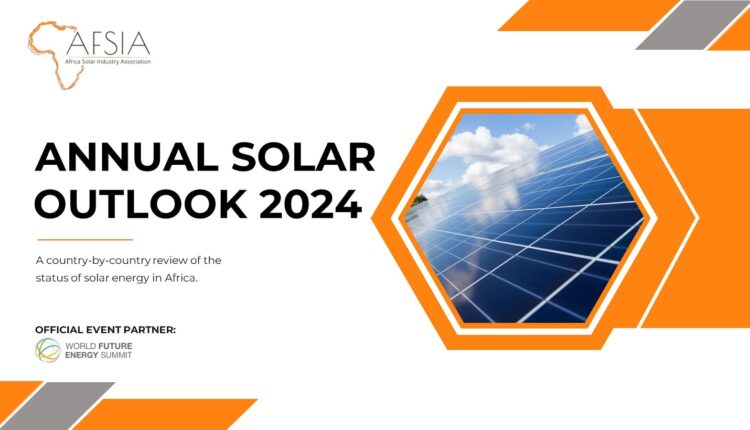BEST YEAR EVER FOR SOLAR IN AFRICA
2023 has been the best year for solar in the world and also in Africa. With around 350 GW of solar installed around the globe, solar has reached new heights in terms of new installed capacities with a 46% increase compared to 2022. In Africa also, a new record was broken with more than 3.7 GW of new solar installations identified by AFSIA as coming online in 2023.
After a solid year in 2022 already, the appetite for solar in Africa did not stop and grew another 19% in 2023 with the addition of 3.7 GWp. In 2023 only, the equivalent of one third of all the solar installed historically in Africa has been added. As a result, Africa is now home to more than 16 GWp of solar.
South Africa, the undisputed African solar leader
With an estimated 7,781 MW of solar (not including residential installations) by the end of 2023, the country hosts almost 50% of all installed capacity in the continent and is by far the leading country for solar in Africa. This domination is true for both historical installations as well as for 2023 activity.
When zooming in on 2023, 79% of all new capacity installed in the past year was installed in South Africa (close to 3,000 MWp out of a total 3,745 MWp). As a result, South Africa has witnessed the most important increase of solar installations in African history in 2 consecutive years, 2022 and 2023.
Many other countries are also progressing in terms of solar, but in much smaller magnitude. And it is fair to say that solar continues spreading across various parts of Africa. In 2023: 1 country installed more than 100 MW, 17 countries installed more than 10 MW and 27 countries installed more than 1 MW. This is very much aligned with AFSIA’s analysis from 2022. However, the number and the average size of solar installations in Africa are increasing.
Based on the info gathered this year, the top 5 countries with the largest new capacities installed in 2023 are: South Africa – 2,965 MWp; Burkina Faso – 92 MWp; Mauritania – 84 MWp; Kenya – 69.5 MWp and Central African Republic – 40 MWp.
Judging national performance solely on installed capacities may be a bit unfair as there are major difference between countries in terms of size, population and electrification level. The AFSIA report therefore proposes to look at solar in each country through two other lenses such as “Wp/capita” and “solar % in the overall generation mix”. This approach gives more credit and visibility to the countries that are small but deliver tangible results on solar.
The African solar market has turned and offers promising opportunities
Until recently, the lion’s share of solar in Africa was driven by large-scale grid-connected projets tendered by the national governments with the support of international institutions. But recent data indicate a drastic change in this picture, with the majority of MWs now being installed through C&I projects, projects installed directly at companies and businesses with the purpose of this solar electricity to be consumed directly on the premises.
In 2023, C&I projects represented 65% of all new capacity added in Africa, with 2,429.5 MWp installed, which is more than double what has been commissioned for large-scale projects in 2023 (1,213.8 – 32.4%). This trend is supported by sharply declining equipment prices and a growing offer of financing solutions, which both combined make it significantly easier and more appealing for companies to engage in producing the electricity for their own consumption.
The other noticeable trend is the exponential rise of green hydrogen projects across the continent. The race for producing the cheapest green hydrogen is global, and several African countries are ideally positioned to win that race thanks to excellent solar irradiation and access to international maritime routes.
Mauritania is one of the most ambitious African countries with regards to green hydrogen, with 57 GW of planned projects. This represents almost 60% of all African green hydrogen development and almost 30% of all solar currently being developed on the continent.
AFSIA Annual Outlook, a wealth of information country-by-country
Next to analyzing the 2023 developments and trends, the AFSIA Annual Outlook report also gives the most recent snapshots of the solar market in each country.
Key national elements such as country objectives for renewables energy, solar policies, current electricity tariffs, key electricity institutions to name a few are identified and highlighted for each country, in order to help decision-makers to make quicker and better-informed decisions about solar developments in Africa.
This year, these “country vignettes” will also be made online and interactive for increased user-friendliness and more regular updates throughout the year.
The 2024 reports can be downloaded at https://www.afsiasolar.com/data-center/outlook-report/


